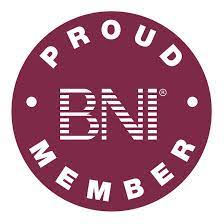The COVID-19 pandemic has forced schools in India and around the world to adapt to hybrid learning models that combine online and in-person learning. While this approach has its benefits, it also presents several challenges that schools must overcome to ensure the success of their students. So let’s discuss on the benefits and challenges of Hybrid Learning in Indian Schools.
One of the most significant benefits of hybrid learning is increased flexibility. Hybrid learning allows students to learn at their own pace and on their schedule. This approach also allows students to access course materials and lectures from anywhere, making it easier for students in remote areas to attend school.
Additionally, hybrid learning allows for a more personalized learning experience. With online resources and tools, teachers can adapt their instruction to meet the individual needs of each student. This approach allows students to work at their own pace, receive immediate feedback, and access resources that support their learning.
Hybrid learning can also provide cost savings for schools. By reducing the need for physical classrooms and other infrastructure, schools can reduce their operating costs. Additionally, hybrid learning can reduce the need for textbooks and other traditional learning materials, which can be costly and quickly outdated.
Despite these benefits, hybrid learning also presents several challenges for schools. One of the most significant challenges is the digital divide. In India, many students do not have access to reliable internet connections or the devices necessary to participate in online learning. This lack of access can create significant disparities in educational opportunities and outcomes.
Another challenge of hybrid learning is maintaining student engagement and motivation. With online learning, students may feel isolated and disconnected from their peers and teachers. Additionally, students may struggle with time management and staying focused in an online environment.
Hybrid learning can also present challenges for teachers. Teachers must adapt their teaching strategies to meet the unique needs of online learners. Additionally, teachers must manage their time and workload effectively, balancing their in-person teaching responsibilities with online instruction and grading.
Finally, hybrid learning can also present challenges for schools to ensure the quality of education is maintained. Schools must ensure that the curriculum is appropriately designed to meet the needs of students in both in-person and online environments. Additionally, schools must ensure that students receive the necessary support and resources to succeed in both learning environments.
In conclusion, hybrid learning has its benefits and challenges for schools in India. Hybrid learning can provide increased flexibility, personalized learning experiences, and cost savings for schools. However, it also presents challenges related to the digital divide, maintaining student engagement and motivation, adapting teaching strategies, and ensuring the quality of education is maintained. By addressing these challenges and leveraging the benefits of hybrid learning, schools in India can provide students with the best possible educational experience.
Read more such articles here







